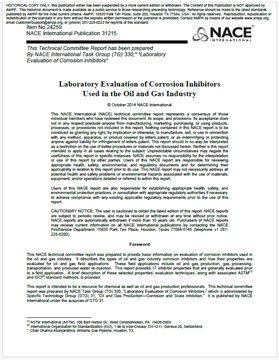Search
NACE Publication 31014-2014-SG, "Field Monitoring of Corrosion Rates in Oil and Gas Production Environments Using Electrochemical Techniques"
Also Purchased
NACE Publication 31215-2014, “Laboratory Evaluation of Corrosion Inhibitors Used in the Oil and Gas Industry
Product Number:
24259-SG
Publication Date:
2014
$179.00
NACE Publication 21410-SG Selection of Pipeline Flow and Internal Corrosion Models
Product Number:
21410-SG
ISBN:
1-57590-353-9
Publication Date:
2016
$109.00




